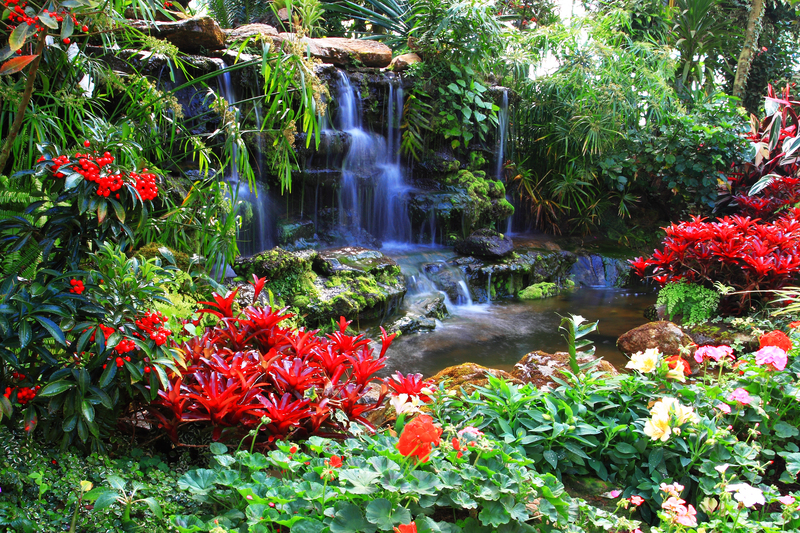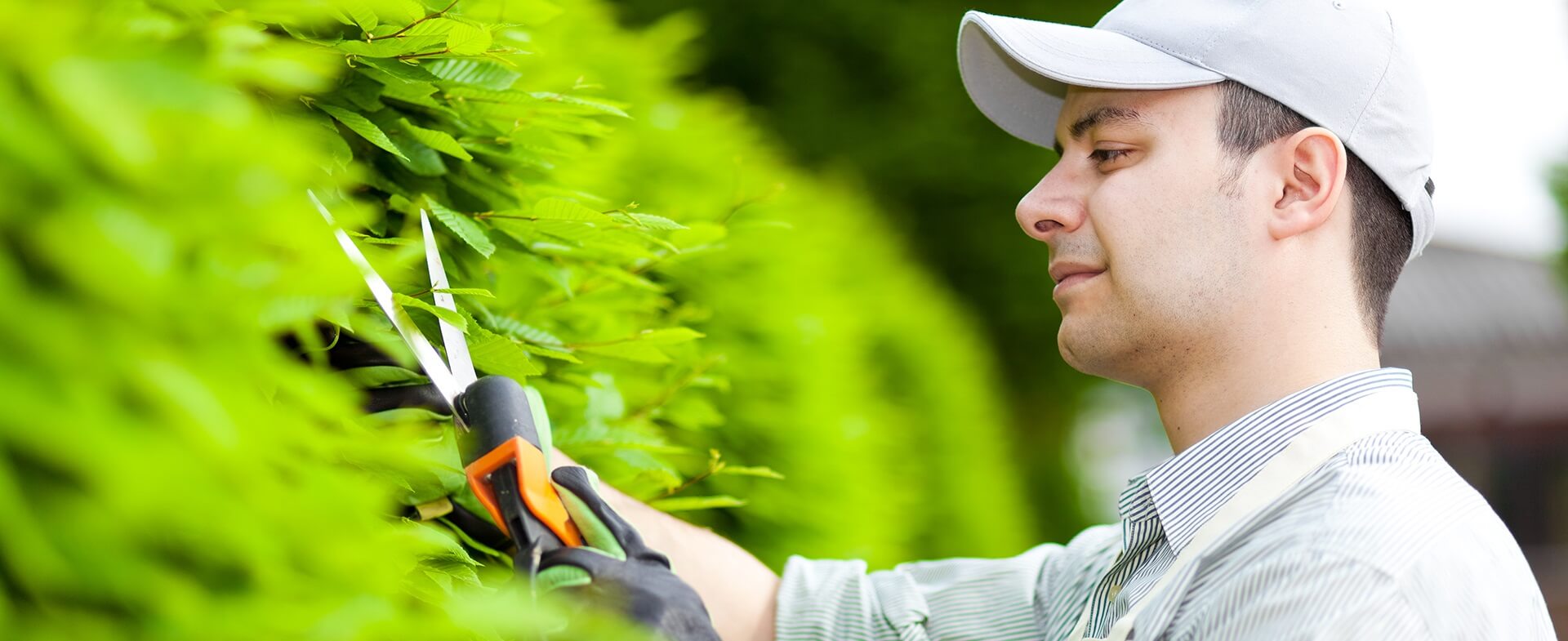Delving into Container Gardening Techniques
Posted on 22/06/2025
Delving into Container Gardening Techniques: A Comprehensive Guide
Container gardening has revolutionized the way people approach gardening, making it accessible for everyone regardless of space, experience, or climate. Whether you possess acres of land or just a city balcony, the art of growing plants in containers opens a world of possibilities. In this in-depth article, we'll explore various container garden methods, practical tips, plant selection advice, and common mistakes, all to help you create a flourishing miniature oasis.

What is Container Gardening?
Container gardening refers to the practice of growing plants exclusively in pots, tubs, or other containers rather than in the ground. This versatile approach is popular among urban dwellers, beginners, and those seeking creative ways to beautify their spaces. From lush patio gardens to decorative window boxes, the spectrum of styles and possibilities is immense.
Why Choose Container Gardening?
- Limited Space Solutions: Perfect for apartments, small patios, and balconies.
- Ease of Maintenance: Simpler weed and pest control compared to traditional in-ground beds.
- Mobility: Move plants to optimize sunlight, temperature, or for design changes.
- Soil Control: Adjust soil composition for individual plant needs.
- Aesthetic Flexibility: Incorporate ornamental elements, match decor, and create visually appealing arrangements.
Choosing the Right Containers for Your Garden
The foundation of successful container gardening lies in choosing the appropriate pots or planters. Here's what you need to consider:
Material Matters
- Terracotta: Classic and porous, allowing roots to breathe but dries out quickly.
- Plastic: Lightweight, affordable, and retains moisture efficiently.
- Ceramic/Glazed Pots: Attractive and durable, excellent for ornamentals but can be heavy.
- Metal: Modern look, but may heat up or rust over time.
- Wooden Planters: Natural aesthetics, insulates roots well but can rot if untreated.
Size and Drainage
It's essential your containers are large enough to house the root systems of your plants. Deep-rooted vegetables require depth, while shallow-rooted herbs and flowers need less space. Always ensure containers have proper drainage holes to prevent waterlogging--a common issue in container garden setups.
Best Soil Mixes for Container Gardening
Unlike traditional gardens, container grown plants rely entirely on the potting mix for nutrients and support. Avoid using garden soil, which is often dense and may introduce pests. Instead, opt for specially-formulated potting mixes with the following qualities:
- Lightweight and Airy: Promotes root growth and drainage.
- Nutrient-Rich: Contains slow-release fertilizers or organic amendments.
- Moisture Retention: Includes ingredients like peat moss, coconut coir, or vermiculite.
For specific container gardening techniques like succulents or orchids, use specialized soil blends tailored to their preferences.
Essential Container Gardening Techniques
Mastering a few key methods will significantly boost the success of your potted plants. Below, we delve into several container gardening methods designed for healthy growth and stunning displays.
1. Thrillers, Fillers, and Spillers
This classic decorative approach uses three plant types in one container:
- Thrillers: Tall, attention-grabbing plants at the center (e.g. ornamental grasses, canna lilies).
- Fillers: Mid-sized, bushy plants that give substance (e.g. coleus, petunias).
- Spillers: Trailing plants that cascade over the pot's edge (e.g. ivy, sweet potato vine).
2. Vertical Container Gardening
Vertical planters or wall-mounted pots allow you to maximize vertical space--ideal for herbs, salad greens, or strawberries. Hanging baskets and stackable containers also fall under this category, providing lush accents to small balconies and patios.
3. Edible Container Gardens
Growing vegetables, fruits, and herbs in pots is both rewarding and practical. Consider:
- Tomatoes, peppers, and eggplants (support with stakes or cages).
- Salad greens and lettuces (shallow containers suit them well).
- Herbs like basil, rosemary, and mint (keep mint in its own pot to prevent spreading).
4. Succulent and Cacti Arrangements
For low-maintenance beauty, use well-draining cactus soil in shallow containers. Group different succulents with varying colors and shapes for a striking effect.
5. Water Garden Containers
With a watertight tub or pot, you can create miniature aquatic gardens. Add water-loving plants like water lilies, papyrus, or miniature lotuses for a serene feature.
6. Indoor Container Gardening
Container gardens aren't limited to the outdoors. Indoors, use pots with saucers, and choose plants that thrive in your home's light and humidity--think pothos, philodendrons, or peace lilies.
Choosing the Right Plants for Your Container Garden
The plant selection process is crucial to the success of your container gardening efforts. Consider these criteria:
- Light Requirements: Match plant light preferences (full sun, part-shade, shade) to your container's location.
- Size and Growth Rate: Choose plants that won't outgrow the pot quickly or overshadow companions.
- Climate and Hardiness: Select varieties that can thrive in your local temperatures or bring tender plants indoors during cold months.
- Purpose: Ornamental display, edible harvest, or pollinator support?
Popular Plant Choices for Containers
- Annual flowers (petunias, marigolds, impatiens)
- Perennial herbs (thyme, oregano, chives)
- Dwarf citrus and berry bushes
- Leafy greens and salad crops
- Houseplants (snake plant, zz plant, calathea)
Maintenance and Care: Container Gardening Best Practices
Consistent care is key to thriving container plants. Regular watering, feeding, and monitoring help avoid common pitfalls.
Watering
- Check Soil Moisture Frequently: Container soil dries faster than ground soil. Water when the top inch feels dry.
- Watering Technique: Water deeply until excess drains from the bottom, avoiding shallow, frequent sips.
- Self-Watering Planters: Consider these for convenience, especially if you travel often.
Fertilizing
- Regular Feeding: Container plants exhaust nutrients quickly. Use liquid fertilizer every 2-4 weeks or employ slow-release granules.
- Tailored Nutrients: Different plants have different nutrient needs. Follow specific recommendations for flowers, veggies, or foliage plants.
Pest and Disease Management
- Inspect Regularly: Check for yellowing leaves, webbing, or insect activity.
- Promote Air Circulation: Space plants adequately and trim overcrowded growth.
- Natural Predators: Use beneficial insects or organic sprays over harsh chemicals whenever possible.
Pruning, Deadheading, and Repotting
- Remove Spent Blooms: Encourage more flowers by snipping off faded blossoms.
- Trim Leggy Growth: Helps maintain shape and stimulates fresh growth.
- Repot as Needed: If roots circle the pot or growth slows, upgrade to a larger container and refresh the soil.
Seasonal Container Gardening Tips
Spring
- Start Cool-Weather Crops: Sow pansies, violas, lettuce, and peas.
- Refresh Soil: Remove old mulch and gently loosen the top layer.
Summer
- Water Generously: Evaporation rates soar in heat--mulch to conserve moisture.
- Rotate Containers: Turn pots for even sun exposure and robust growth.
Fall
- Transition to Autumnal Plants: Add mums, ornamental kale, and asters.
- Start Bulbs for Spring: Plant daffodils or tulips in pots for an early display next year.
Winter
- Protect Tender Plants: Move containers indoors or group together for insulation.
- Consider Evergreens: Boxwood, dwarf conifers, or winterberry provide year-round interest.
Avoiding Common Container Gardening Mistakes
Starting a container garden is straightforward, but beginners often overlook a few critical points:
- Overwatering or Underwatering: Remember, potting soil needs regular but not excessive hydration.
- Skipping Drainage: Never use pots without drainage holes; waterlogged roots die off quickly.
- Poor Potting Mix: Don't reuse old soil indefinitely as it loses nutrients and structure over time.
- Overcrowding Plants: Allow enough room for each plant's mature size.
- Ignoring Sunlight Requirements: Don't force shade-lovers into all-day full sun or vice versa.
Advanced Container Gardening Techniques
Hydroponic Containers
Soil-less gardening is gaining popularity. Hydroponic planters use water and nutrients to support plant growth, ideal for herbs, leafy greens, and even some fruiting veggies indoors.
Self-Watering Systems
Incorporating a reservoir at the pot's base, self-watering containers ensure consistent soil moisture and reduce manual labor--an excellent innovation for busy gardeners.
Companion Planting in Pots
Mix compatible plants within one container for natural pest control and robust yields: for example, basil alongside tomatoes or marigolds with peppers.

Designing Your Container Garden: Creativity Unleashed
Container gardening is as much an art form as a science. Experiment with color palettes, pot groupings, heights, and textures. Don't hesitate to upcycle old buckets, crates, or even boots for quirky, personalized planters. The possibilities are truly endless for expressing your style.
Conclusion: Cultivating Joy Through Container Gardening
Delving into various container gardening techniques unlocks a rewarding hobby that suits any lifestyle. With the right combination of suitable pots, soil, plants, and care, you can turn even the smallest nook into a lush sanctuary. Start small, learn from each season, and let your creativity flourish with each new planting.
Whether you crave fresh tomatoes on your windowsill, a fragrant herb garden on your patio, or a burst of color by your front door, container gardening delivers. Embrace the journey, experiment with new container garden ideas, and watch your living masterpiece grow.

